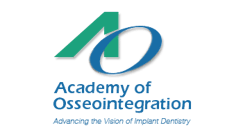#AskAO: How do I improve guided surgery outcomes?
____________________________________________________
RELATED
'How much do you charge for an implant? I just want to know the price!'
Etiology, prevention, and treatment of screw loosening and fracture
____________________________________________________
The AO chose Lozada to present on the topic, as he is instrumental in the training of residents and fellows in the latest techniques of oral implant surgery and prosthodontics. He is a professor at Loma Linda School of Dentistry, as well as the school’s director of graduate programs, restorative dentistry, and oral implant dentistry.
Guided surgery has a 16-year history, which yielded significant literature in the process. Lozada presented the consensus on the advantages and disadvantages of the treatment procedure, including:
Advantages of guided surgery (heaven):
· Reduction of surgical errors (for some)
· Accurate implant placement
· Less invasive and less pain for patients
· Improved treatment time efficiency
· Simplified prosthodontics rehabilitation
Disadvantages of guided surgery (hell):
· Increased surgical errors (for others)
· Increases treatment time preparation
· Some inaccuracies during implant placement
· Increased cost
· Not easier than conventional implant placement
Lozada also discussed the conclusions of a systematic review of the literature on guided surgery. The conclusions revealed there is no difference to implant survival rate between conventional and guided implant treatments. The systematic review also showed guided surgery cannot be considered easier than conventional surgery and there were some common complications.
“If we are able to deliver a very strong provisional rate, now we are going to minimize the very high complication rate that has been described in the literature,” he said.
Lozada recommended the following considerations to minimize the disadvantages or the Hell side of guided surgery.
· Consider minor soft tissues reflection to minimize the damage and improve the bone support around the dental implant
· Correct within the guide as needed if you feel the implant isn’t going in the right position (most of the newer guides allow for this type of correction)
· Use preprocessed acrylic monoblock for digital dentures to minimize the complications
· Avoid definitive restorations at placement
· Ensure the provisional restorations provide soft tissue support
Lozada emphasized that the treatment has merit and in the right hands it can be a great solution for today’s clinician placing implants for their patients.
Members of the AO can download the webinar for free. Simply use your member login to the AO website and select the webinar to download to your device. Non-members may access it for a $50 fee. AO is an ADA CERP Recognized Provider and designates the completion of this webinar activity for one-hour continuing education credit.
Register now for the next AO webinar titled “Controversies in Assessing Implant Stability – Is Tight Right?” with Dr. Michael Norton, which will be presented at 12:00 pm (CDT) on September 9, 2015. For further information, contact Ms. Kimberly Scroggs at 847-439-1919 or visit http://www.osseo.org/webinars/future.html.
